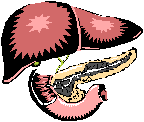DOH Medicaid Update May 2002 Vol. 17, No. 5
Office of Medicaid Management
DOH Medicaid Update
May 2002 Vol.17, No. 5
State of New York
George E. Pataki, Governor
Department of Health
Antonia C. Novello, M.D., M.P.H., Dr. P.H.
Commissioner
Medicaid Update
is a monthly publication of the
New York State Department of Health,
Office of Medicaid Management,
14th Floor, Room 1466,
Corning Tower, Albany,
New York 12237
Table of Contents
Durable Medical Equipment: Fee for Prosthetic
Midwives and New Procedures
The Diabetes Resource Coalition of Long Island
World Asthma Day 2002
Pharmacy: Answers to Common Questions
Long Term Home Health Care Need for Information
Electronic Billing Transmission: Some Reminders
How To Request Sterilization and Hysterectomy Forms
Optometrists Who Prescribe: Special Instructions
Physician and Clinic Billing for Magnetic Resonance Imaging
Seminars Offered to New Providers
Dental Providers: New Instructions for Billing and Coverage
Hepatitis C: Treatment Options and Considerations
DO YOU BILL ON PAPER CLAIM FORMS
Return to Table of Contents
Computer Sciences Corporation (CSC) will soon enhance the processing of Medicaid claims submitted on paper. In the near future, the use of new scannable forms will be implemented to increase the efficiency and accuracy of paper claims processing.
To minimize the impact of the new paper claim form implementation on the provider community, the content and layout of the new forms will remain identical to those of the current forms. The changes will only affect:
The color.
- For scanning purposes, the forms will be printed in a "red drop-out" color.
The carbon copy.
- The new forms will not have a carbon copy. This means that providers who currently retain the carbon copy of claim forms as part of record keeping will need to make copies of the original forms.
Providers will be allowed to deplete their stock of old forms before they begin using the new forms.
When the new scannable forms are ready, CSC will supply the new forms when providers automatically trigger (or place a request) for replenishment. Consistent with the current forms, the new claim forms will be available in pin-fed or burst fashion.
All Medicaid paper claim forms will be replaced. These include Claim Form A, Claim Form B, Claim Form C, Pharmacy Claim Form, and Medical Assistance Health Insurance Claim Form-Title XIX Program HCFA-1500.
Please note: Claim forms that are illegible or improperly completed (missing or incorrect information) may cause payment delays or denials. To ensure efficient claim processing, it is imperative that all the information be legible and entered within the space limits of each field . Information that is entered outside the field space or that cannot be read may result in pended or denied claims.
More information regarding the implementation of the new forms will be published in future Medicaid Updates.
Questions about the new forms should be directed to CSC's Provider Relations Department at the following telephone numbers:
Practitioner Services (800) 522-5518 or (518) 447-9860
Institutional Services (800) 522-1892 or (518) 447-9810
Professional Services (800) 522-5535 or (518) 447-9830
DURABLE MEDICAL EQUIPMENT FEE
ESTABLISHED FOR PROSTHETIC
Return to Table of Contents
Effective for dates of service on and after April 1, 2002, the following code has a maximum fee and does not require prior approval:
L5671 Addition to lower extremity, below knee/above knee suspension locking mechanism (shuttle, lanyard or equal) excludes socket insert $1,110
Please make note of this change on page 4-73 of your MMIS Durable Medical Equipment Provider Manual (Rev.4/02).
Questions may be referred to the Bureau of Medical Review and Payment at (518) 474-8161.
MIDWIVES TO BE REIMBURSED FOR NEW PROCEDURES
Return to Table of Contents

The New York State Medicaid Program has developed an additional list of procedure codes to be recognized by Medicaid, for reimbursement to midwives, effective for dates of service on or after July 1, 2002.
Inclusion of these codes, definitions and maximum fees will coincide with the publishing of the Medicaid Fee Schedule. The revised fee schedule will be distributed in June 2002.
Policy questions regarding this article should be directed to the Bureau of Policy Development and Agency Relations at (518) 473-2160. For billing assistance, please call your Computer Sciences Corporation at (800) 522-5518 or (518) 447-9860.
Diabetes Coalition Spotlight
In the next several months, the Medicaid Update will highlight activities of the Department of Health's statewide diabetes coalitions. We hope this information will assist Medicaid providers in rendering diabetes care. The Long Island Coalition is being featured this month.
Interested in being part of your region's coalition? Contact the Diabetes Control Program at (518) 474-1222.
The Diabetes Resource Coalition of Long Island
Return to Table of Contents

The Diabetes Resource Coalition of Long Island (DRCLI), formed in 1998, is an alliance of community based organizations, agencies, businesses and health care professionals committed to raising diabetes awareness and providing education on the prevention and treatment of diabetes. DRCLI's mission is to maximize the use of community resources dedicated to the prevention, identification and treatment of diabetes. The coalition has been recognized as a regional Community Coalition for Diabetes Prevention by the New York State Department of Health, and has received grant funding for projects since 1999. There is no fee for agencies to join the coalition.
DRCLI provides a venue for professionals to network, consolidate resources and increase opportunities for health care providers to obtain continuing education on recent developments in diabetes standards and care. Community residents have been afforded numerous opportunities to increase their knowledge on diabetes prevention and management. These opportunities have been accomplished through outreach efforts and programs offered by individual agency members as well as through the collaborative projects among partner members.
To date, coalition activities have included:
- Production of three short consumer video segments shown on six cable stations throughout Long Island.
- Collaborative participation in American Diabetes Association (ADA) Diabetes Sundays, Long Island East End Community Forum and the Diabetes Expo.
- Facilitation of special foot screenings, diabetes self-management education classes (in English and Spanish) and support groups.
- Provision of weight management classes in Suffolk County open to community residents with or without diabetes.
- Provision of diabetes awareness and information at community health fairs held throughout Long Island.
Members of the coalition also have provided diabetes awareness and information at community health fairs held throughout Long Island.
For more information regarding the Diabetes Resource Coalition of Long Island, membership or activities, please contact Sue Wilk or Sally Foulke at (631) 727-7850, or visit their website at: www.longislanddiabetes.org.
The Medicaid Program reimburses for medically necessary care, services and supplies for the diagnosis and treatment of diabetes. For information regarding Medicaid coverage of services related to diabetes, please contact the Bureau of Program Guidance at (518) 474-9219, or please go to: http://www.health.state.ny.us/health_care/medicaid/program/2000/oct2000.htm.
For more information on diabetes or the diabetes coalitions, contact the Diabetes Control Program at (518) 474-1222 or at the Department's web site at: www.health.state.ny.us
World Asthma Day 2002
Celebrating Success, Recognizing the Challenge
Return to Table of Contents

On May 7, 2002, people around the world will recognize World Asthma Day. World Asthma Day is an opportunity to draw attention to the global burden of asthma, as well as its impact right here in the United States. World Asthma Day is a partnership between health care groups and asthma educators organized by the Global Initiative for Asthma, a collaborative effort of the National Heart, Lung and Blood Institute and the World Health Organization.
Over 150 million people in the world are diagnosed with asthma. In the United States, an estimated 14.6 million people have the disease. Asthma affects nearly five million children. Between 1980 and 1994, the prevalence of asthma in the U.S. increased 75% among children 5 to 14 years of age. Low-income populations, minorities, and children living in inner cities experience disproportionately higher morbidity and mortality rates due to asthma. Among the impacts of asthma in children:
- Asthma accounts for 10 million lost school days annually.
- It is the third-ranking cause of hospitalization among children under 15 years.
- The estimated cost of treating asthma in those under 18 years is $3.2 billion per year.
There are still many misconceptions about this disease. Some people believe that if their child has asthma, it is not something to be concerned about because he or she "will grow out of it." Some children do stop exhibiting symptoms of asthma once they reach puberty, but others will continue to be affected by it throughout their lives and in fact, some adults who never had asthma as children develop it in their later years. Asthma causes underlying inflammation in the bronchial tubes. During an asthma attack, muscles around the airways contract and excess mucus forms within the tubes. These three factors result in the airways being much smaller than normal and it is physically difficult to get air in or out of the lungs.
On World Asthma Day, we would like you to remember that asthma CAN BE CONTROLLED. Trips to the emergency room, restricted physical activities, and a limited quality of life do not have to be negative consequences of having asthma. It takes a joint effort between the child with asthma, his or her family, their doctor, and people in the work, school, and health care environments, but by working together it can be done. Medications exist today that can both control the ongoing inflammation in the airways and reduce the effects of an acute episode. Changes at school and home can reduce exposure to environmental triggers that can make asthma worse. The best defense against asthma is knowledge. On World Asthma Day, we encourage people to learn more about this complex disease.
For more information on World Asthma Day:
http://www.ginasthma.com
or,
http://www.nhlbi.nih.gov
For more information on asthma and schools:
http://www.lungusa.org/school
or,
http://www.cdc.gov/nceh/airpollution/asthma/children.htm
or,
http://www.aanma.org/schoolhouse
Source: Centers for Disease Control and Prevention, Division of Adolescent and School Health, Atlanta, GA., 3/02.
NYS Medicaid Program reimburses for medically necessary care, services, and supplies for the diagnosis and treatment of asthma. For more information, please contact the Bureau of Program Guidance at (518) 474-9219.
Ask the Pharmacist...
Return to Table of Contents

Ask the
Pharmacist...
In response to some of our most frequently asked questions, we have added Ask the Pharmacist to the monthly Medicaid Update. We hope this information is useful to you and your staff.
- Q:Is it necessary for me, the pharmacist, to call the prior authorization toll-free number even though the physician has already done so?
- A: Yes. For a pharmacist to be reimbursed, the prior authorization process must be complete. The prescriber requests the prior authorization and places the number on the face of the prescription. The pharmacy calls the same toll-free number and submits information the prescriber does not have, including your Medicaid provider identification number, the specific NDC of the drug dispensed, and the quantity dispensed. This information is necessary for claims payment.
- Q: How much longer will we be seeing the "Temporary Disaster Relief Authorization" (TDRA) forms?
- A: The last group of Temporary Disaster Relief Authorizations (L -series), issued throughout the month of January 2002, expired April 30, 2002. Prior to the TDRA expiring, recipients should have received a letter entitled "Notice of Temporary Extension of Your Disaster Relief Medicaid." Following this letter, the regular plastic common benefit identification card (CBIC) with a new client identification number (CIN) will be issued. Regardless of whether the individual has a letter of eligibility or a CBIC card, providers must verify eligibility through EMEVS using the new CIN.
- Q: How can I verify a recipient's eligibility?
- A: If you have the recipient's Medicaid ID number, you can access the Electronic Medicaid Eligibility System (EMEVS) by using your touchtone telephone. The number to dial is (800) 997-1111. You will need to convert the alpha characters in the ID number to numeric prior to dialing. Further instructions on converting the number and assessing the EMEVS System are in the EMEVS Provider Manual, which can be obtained by calling CSC's Provider Relations Department at the number listed near the beginning of this issue.
If you do not have the recipient's Medicaid ID number, you can verify eligibility as long as you have the recipient's name and social security number by calling (900) 555-2525 for a fee of $ .85 per minute. When calling this number, you must specify you are calling for a "name search".
- A: If you have the recipient's Medicaid ID number, you can access the Electronic Medicaid Eligibility System (EMEVS) by using your touchtone telephone. The number to dial is (800) 997-1111. You will need to convert the alpha characters in the ID number to numeric prior to dialing. Further instructions on converting the number and assessing the EMEVS System are in the EMEVS Provider Manual, which can be obtained by calling CSC's Provider Relations Department at the number listed near the beginning of this issue.
- Q: I keep getting a "maximum quantity rejection" when billing for liquid filled syringes, such as Lovenox, Fragmin, Kineret and Neupogen. Why is this? How am I supposed to bill for these?
- A: If a product comes as a liquid filled vial or syringe, reimbursement is determined by the total quantity of milliliters dispensed. Therefore, the maximum quantity field must reflect the number of vials/syringes dispensed multiplied by the number of milliliters per vial.
Powder filled vials are billed by the number of vials dispensed. Therefore, the maximum quantity field would reflect the number of vials dispensed.
- A: If a product comes as a liquid filled vial or syringe, reimbursement is determined by the total quantity of milliliters dispensed. Therefore, the maximum quantity field must reflect the number of vials/syringes dispensed multiplied by the number of milliliters per vial.
The Department of Health must respond to the decision of a recent court proceeding, called Evans v. Wing, et. al. The following information is intended for Long Term Home Health Care Program providers.

Long Term Home Health Care Program Providers
Information May Be Requested
Return to Table of Contents
A decision in the Evans v. Wing, et. al. court case found that certain individuals who received home and community-based waiver services may be eligible for Medicaid reimbursement/payment of past medical bills.
Individuals are entitled to Medicaid reimbursement/payment if they:
- had a spouse in the community;
- received home and community-based waiver services through the Long Term Home Health Care Program (LTHHCP) at any time during the period from September 1, 1996 to May 31, 2001;
- were allowed a $50 personal needs allowance in determining their Medicaid eligibility; and,
- were required to contribute some of their income toward the cost of their care for any month(s) during the time period listed above.
Under the Evans court decision, individuals described above must have their Medicaid eligibility recalculated with a personal needs allowance (PNA) equal to the difference between the Medicaid income level for one-person and two-person households. This change will result in some individuals being eligible for reimbursement for some or all of the income they previously paid toward the cost of care.
Individuals who request Medicaid reimbursement must provide proof of payment of paid medical expenses. This may include payment made to an individual's LTHHCP provider. If an individual still owes money to the LTHHCP provider, the individual will be instructed to provide a copy of the outstanding medical bill to his/her local department of social services. We would appreciate your assistance in providing a copy of an outstanding or paid medical bill to these individuals. Medical bills that require payment from Medicaid as a result of an adjustment will be processed manually. We will notify providers if they are entitled to any Medicaid payment. The retroactive reimbursement/payment reviews pertain to the LTHHCP population.
The Department is scheduled to mail notices to class members by May 2002.
Questions concerning the documentation that recipients will be required to obtain may be referred to the Medicaid office at your county department of social services.
DID YOU KNOW?
Did you know that, during the twelve months of October 1999-September 2000,
the average monthly number of Medicaid enrollees was 2,764,500 ¹
The Department of Health thanks all our providers!
¹Source: Average Monthly Medicaid Enrollees, Federal Fiscal Year 2000 NYSDOH/OMM On-Line SURS Information Retrieval System
Electronic Billing Transmission Reminders
Return to Table of Contents
The New York State Medicaid Management Information System Electronic Gateway (NYS-MMIS-EG) is available for electronic submission of claims via modem seven days a week, 24 hours per day, with the following exceptions:
Monday through Friday Between 6:00 P.M. and 8:00 P.M. Wednesday Between 11:00 A.M. and 2:00 P.M.
If necessary, scheduled program maintenance will be performed during the above times. Please plan accordingly. If you are unable to access the electronic gateway during these times, please try again at another time.
You should always plan on transmitting your file(s) as far in advance to the close of cycle (Wednesday) as possible. Additionally, there are at least four cycles per year where the close of cycle occurs on Tuesdays. Please watch for Medicaid check messages that alert submitters, in advance, of the Tuesday close of cycle.
Occasionally you may encounter a busy signal when you attempt to access the NYS-MMIS-EG. In that case, please try again at a later time. Line availability is significantly increased:
- between 7:00 P.M. and 7:00 A.M. on weekdays; and,
- throughout the day on weekends.
If these hours are inconsistent with your normal work schedule, you may want to explore automating your submissions. This will allow you to send your files at predetermined times when lines are more available. User support is provided Monday through Friday between 9:00 A.M. and 5:00 P.M. by Computer Sciences Corporation (CSC) Provider Relations, EMC Support Unit at (518) 447-9256.
Providers making inquires or requesting billing training by Regional Representatives should contact CSC by calling the telephone number listed below. Please be prepared to supply your Medicaid Provider ID number.
Practitioner Services (800) 522-5518 or (518) 447-9860
Institutional Services (800) 522-1892 or (518) 447-9810
Professional Services (800) 522-5535 or (518) 447-9830
Requests for Sterilization and Hysterectomy Consent Forms
Return to Table of Contents

Physicians, nurse practitioners and midwives may request sterilization and hysterectomy consent forms by submitting a request in writing to:
Forms and Print Management
PO Box 1990
Albany, NY 12201
Telephone or fax requests are not accepted. There is no charge or order form to complete.Your request should be on official letterhead and include the provider's name, address and the quantity of forms needed.
You may order the forms in English or Spanish.
PRESCRIBING OPTOMETRISTS
Special Instructions For Pharmacy Prescriptions
Return to Table of Contents
The following article was printed in the February 2002 issue of the Medicaid Update. Two categories of "Phase II" therapeutic pharmaceutical agents were unintentionally omitted for the treatment of glaucoma and ocular hypertension by optometrists. The article is reprinted and is updated to include a complete list of "Phase II" therapeutic pharmaceutical agents.
Optometrists who are certified by the State Education Department (SED) to prescribe "Phase I" pharmaceutical agents are authorized to prescribe the following:
antibiotics/antimicrobials
decongestants/anti-allergenics
non-steroidal anti-inflammatory agents
steroidal anti-inflammatory agents
antiviral agents
hypersomotic/hypertonic agents
cycloplegics
artificial tears and lubricants
Optometrists who have received certification to prescribe "Phase I" therapeutic pharmaceutical agents will have a special privilege letter (U) that will precede their six-digit license number (ex. U123456).
Optometrists who are certified by SED to prescribe "Phase II" pharmaceutical agents for the treatment of glaucoma and ocular hypertension are limited to prescribing:
beta blockers
alpha agonists
direct acting cholinergic agents
prostaglandin analogs
carbonic anhydrase inhibitors
Optometrists who have received certification to prescribe "Phase I" and "Phase II" therapeutic pharmaceutical agents will receive the special privilege letter (V) that will precede their six-digit license number (ex. V234567).
The optometrist's license number, name, office address, and office telephone number should appear on the prescription.
Confirmation of the certification status of an optometrist may be obtained by accessing the New York State Department of Education website at:
and clicking on "Online License Verification."
If you have any questions regarding this article, please contact the Bureau of Policy Development and Agency Relations staff at (518) 473-2160.
MAGNETIC RESONANCE IMAGING
PHYSICIAN AND CLINIC (ARTICLE 28) BILLING
Return to Table of Contents
Medicaid coverage of magnetic resonance imaging (MRI) services has been expanded to include reimbursement to physicians for either the complete procedure or the professional component. The maximum reimbursable amount for an MRI service is $500 for the complete procedure (including both the professional and technical/administrative components). For information regarding the correct billing for the professional or technical/administrative components, see the Radiology Section of the MMIS Physician Services Provider Manual.
Reimbursement for paramagnetic contrast media is made via code A4647 Supply of paramagnetic contrast material, e.g., gadolinium (per ml).
The following CPT codes are currently published in the MMIS Ordered Ambulatory Services Provider Manual. Effective for dates of service January 1, 2002 onward, these codes are now available for physician billing and will be published in the next revision of the procedure code section of the MMIS Physician Services Provider Manual.
| 70336 | 70540 | 70542 | 70543 |
| 70544 | 70545 | 70546 | 70547 |
| 70548 | 70549 | 70551 | 70552 |
| 70553 | 71550 | 71551 | 71552 |
| 71555 | 72141 | 72142 | 72146 |
| 72147 | 72148 | 72149 | 72156 |
| 72157 | 72158 | 72159 | 72195 |
| 72196 | 72197 | 72198 | 73218 |
| 73219 | 73220 | 73221 | 73222 |
| 73223 | 73225 | 73718 | 73719 |
| 73720 | 73721 | 73722 | 73723 |
| 73725 | 74181 | 74182 | 74183 |
| 74185 | 75552 | 75553 | 75554 |
| 75555 | 76093 | 76094 | 76400 |
Billing Instructions
Physician: When billing for only the professional component, it is imperative that the physician's claim be billed with the appropriate modifier (Modifier 26). Absence of the "26" modifier on the physician's claim will result in claim denials for the provider billing for the technical/administrative component.
Clinic: Article 28 facilities billing for only the technical/administrative component must use the appropriate modifier (Modifier TC). Absence of the "TC" modifier will result in claim denial for the physician billing for the professional component.
If you have any questions regarding coverage of MRI, please call the Bureau of Medical Review and Payment at (518) 474-8161.
ARE YOU A NEW PROVIDER?
Schedule of Medicaid Seminars for New Providers
Return to Table of Contents
Computer Sciences Corporation (CSC), the fiscal agent for the New York State Medicaid Management Information System (MMIS), announces the following schedule of Introductory Seminars. Topics will include:
- Overview of MMIS
- Explanation of MMIS Provider Manual
- Discussion of Medicaid Managed Care
- Overview of Billing Options
- Explanation of 90-day Regulation
- Explanation of Utilization Threshold Program
Please indicate the seminar(s) you wish to attend below:
July 17, 2002 - - 10:00 AM
Washington County Municipal Center
Building B, Training Room
383 Broadway
Fort Edward, NY
July 23, 2002 - - 10:30 AM or 1:30 PM
Clinton County Dept. of Social Services
First Floor Conference Room
13 Durkee Street
*Plattsburgh, NY
Please register early to attend sites marked with (*) because seating is limited.
Each seminar will last approximately two hours.
Additional seminars may be scheduled as new programs are implemented or changes to existing billing procedures are announced.
Direct questions about these seminars to CSC as follows:
Practitioner Services (800) 522-5518 or (518) 447-9860
Institutional Services (800) 522-1892 or (518) 447-9810
Professional Services (800) 522-5535 or (518) 447-9830
Please complete the registration information using the link to the form below:
To register, please mail the completed page to:
Computer Sciences Corporation
Attn.: Provider Outreach
800 North Pearl Street
Albany, NY 12204
Or, fax a copy of the completed page to: 518-447-9240
Note: Please keep a copy of your seminar choice for your records. No written confirmations will be sent.
DENTAL PROVIDERS
NEW INSTRUCTIONS FOR BILLING AND COVERAGE
Return to Table of Contents

Fee Schedule Revision
The description contained in the April 1, 2002 update to the Dental Fee Schedule for the new code 03230 failed to indicate the requirement for "TOOTH" identifier. The description for this code should read:
03230 Pulpal therapy (resorbable filling) -- anterior, primary tooth (excluding final restoration) (Tooth)" $174.00
The procedure requires prior approval and is tooth specific.
Teeth to be treated using this code should be identified on both the Prior Approval and Claim forms using letters:
- C, D, E, F, G or H in the upper arch, and,
- M, N, O, P, Q or R in the lower arch.
Immediate Dentures
The term immediate denture means the construction of prosthetic appliances before all of the remaining natural teeth have been removed and before required surgical recontouring has been completed, with the insertion of the appliances over unhealed tissues with or without suturing.
Immediate dentures are not reimbursable under the Medicaid Program. The placement of immediate dentures, as evidenced by record review, and the subsequent billing for conventional dentures is an inappropriate and unacceptable practice.
By-Report Surgical Procedures
To expedite processing of claims for by-report and other surgical procedures requiring manual review and/or pricing, providers should include supporting documentation inclusive of a summary of significant clinical findings, operative and/or histolopathologic reports when submitting initial claims to Computer Sciences Corporation. DO NOT SUBMIT RADIOGRAPHS WITH CLAIMS.
Billing: Fee Schedule, or, Usual and Customary?
Billing Rule #1, at the beginning of the Dental Fee Schedule, states:
"Reimbursement for services listed in the New York State Fee Schedule for Dental Services is limited to the lower of the fee indicated for the specific service or the provider's usual and customary charge to the general public."
If you have any questions regarding Dental coverage, please call the Bureau of Medical Review and Payment at (518) 474-3575 (touchtone selection #2) or (800) 342-3005 (touchtone selection #2).
Hepatitis C
Treatment Options and Considerations
Return to Table of Contents

The National Institutes of Health Consensus Development Conference Panel recommends that therapy for hepatitis C virus (HCV) infection be limited to those patients who have histological evidence of progressive liver disease.
Treatment Options
Therapy for HCV is a rapidly changing area of clinical practice and treatment options have dramatically different costs. As a result, it is most important to assure that patients who require treatment are provided the most clinically appropriate and cost effective therapy. Treatment options include interferon-alpha (mono-therapy) and interferon-alpha/ribavirin (combination therapy). Clinical considerations and therapy cost to the Medicaid program are outlined below.
MONO-THERAPY (INTERFERON-ALPHA)
| Drug | Estimated Medicaid Cost/Month* | Clinical Considerations |
|---|---|---|
| Intron-A | $512 |
|
| Infergen | $419 | |
| Roferon-A | $396 | |
| PEG-Intron | $1,093 |
COMBINATION THERAPY (INTERFERON-ALPHA AND RIBAVIRIN)
| Drug | Estimated Medicaid Cost/Month* | Clinical Considerations |
|---|---|---|
| Rebetron Kit (Intron-A and ribavirin capsules) | $1,778 | Same as above and for the interferon-alpha portion and the following as a result of the addition of ribavirin:
|
| Rebetol (ribavirin) with interferon-alpha | $1,653(+ interferon-alpha $) |
* Based on manufacturer recommended dosages.
Source of National Institutes of Health Consensus Development Conference Panel Statement: Hepatology, 1997; 26 (suppl 1):2S-10S.
Fraud impacts all taxpayers.
Do you suspect that a recipient or a provider has
engaged in fraudulent activities?
Please call:
1-877-87fraud
Your call will remain confidential.
The Medicaid Update: Your Window Into The Medicaid Program
The State Department of Health welcomes your comments or suggestions regarding the Medicaid Update.
Please send suggestions to the editor, Timothy Perry-Coon:
NYS Department of HealthOffice of Medicaid Management
Bureau of Program Guidance
99 Washington Ave., Suite 720
Albany, NY 12210
(e-mail MedicaidUpdate@health.state.ny.us )
The Medicaid Update, along with past issues of the Medicaid Update, can be accessed online at the New York State Department of Health web site: http://www.health.state.ny.us/health_care/medicaid/program/main.htm